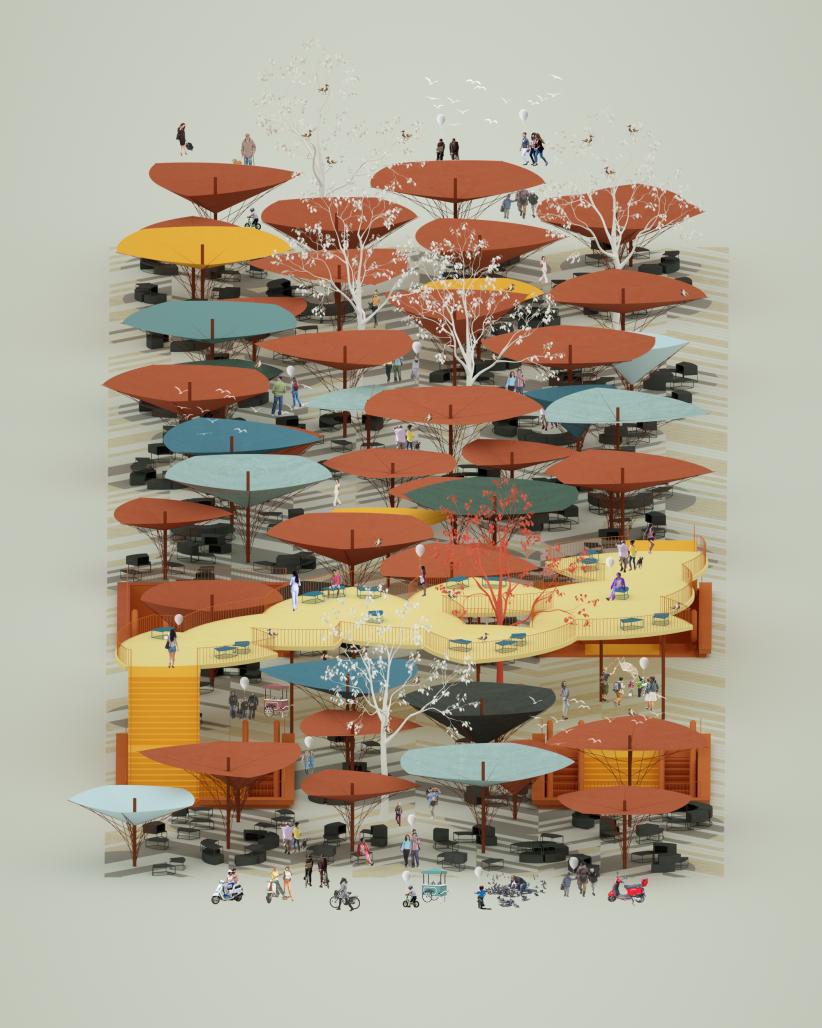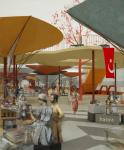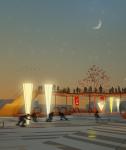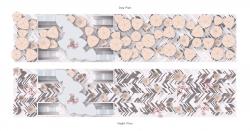Traditional bazaars consist of three primary components; trade units, passages (Rasteh) and units with other activities with cultural and social qualities. The gradual taking shape of bazaar was based on demands and functions. Our reading and unfolding the architecture of bazaar has resulted in the diagram.1, representing the user’s vision in which the products undermine perspective to the ceiling and floor. As a result, we have decided to emphasize our design by limiting our project to these two components. We also believe that in our digital age, presenting an algorithm would enhance the hybrid quality of pop-up architecture. This enables us to superimpose salespersons and costumers demands on the presented architectural possibilities. By doing so we have intended to regenerate the gradual forming process in an everyday cycle. Since people needs vary every day the mutable bazaar also is designed to respond to it. The formal analysis of the project is based on the syntax of traditional Turkish architecture, which led us to study a catalog of geometries developed by various type of arcs. We found a specific system with the quality to make the plan to be connected in the bottom and separated in the top.
2019
0000
Malikeh Tojjar, Alireza Karimi, M. Sajad Ghaderi







